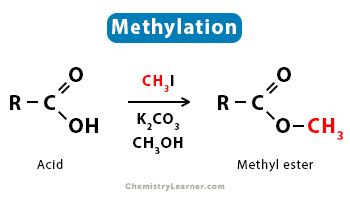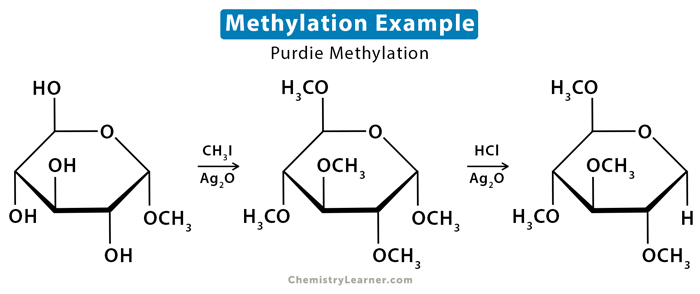Methylation
Methylation is the process of adding a methyl group to a molecule. Methyl is either added to the substrate or replaced with another functional group. It can be considered a particular case of alkylation in which a methyl group is transferred. In biochemistry, methylation involves the replacement of a hydrogen atom, and the reaction is catalyzed by enzymes [1-4].
Types of Methylation
Electrophilic Methylation
In electrophilic methylation, the methyl group is provided by an electrophile. Some common electrophiles are iodomethane, dimethyl sulfate, dimethyl carbonate, and tetramethylammonium chloride. On the other hand, less common methylation agents are methyl triflate, diazomethane, and methyl fluorosulfonate. The methylation reaction proceeds via the SN2 mechanism [1-4].
Examples
- Methylation of carboxylate (RCOOH) at its oxygen gives methyl ester (RCOOCH3).
- An alkoxide salt (RO–) is methylated to give an ether (ROCH3).
- The methylation of a ketone enolate on carbon produces a new ketone.
- Purdie methylation involves methylation at the oxygen of carbohydrates using iodomethane and silver oxide.
Nucleophilic Methylation
Transferring a methyl group from a nucleophilic reagent is called nucleophilic methylation. Strong nucleophilic methylating reagents include methyllithium (CH3Li) or Grignard reagents such as methylmagnesium bromide (CH3MgX) [1-4].
Example
Adding methyl to the carbonyl carbon of an aldehyde or ketone yields a methyl alkyl alkoxide.
RCOR’ + CH3Li → RCCH3R’O–Li+







